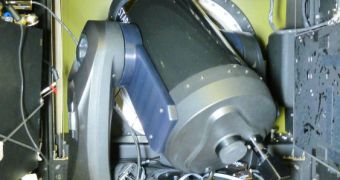A new Earth-monitoring instrument will be delivered to the International Space Station today, July 20, when the Japan Aerospace Exploration Agency (JAXA) launches its third H-II Transfer Vehicle (HTV-3). The device will enable astronauts to snap impressive photos of the surface of the planet.
Dubbed the International Space Station SERVIR Environmental Research and Visualization System (ISERV) Pathfinder camera, the instrument is scheduled to arrive on the orbital after the HTV-3 is captured and docked to the station, using the Canadarm-2 robotic arm.
JAXA says that HTV-3 is currently scheduled to take off at 7:06 pm PDT on Friday, July 20 (0206 GMT, July 21), from the Tanegashima Space Center, in southern Japan. In addition to scientific experiments and cargo, it will also carry food, water and fuel for Expedition 32 crew members
One of the primary capabilities of the SERV Pathfinder will be to acquire extremely-detailed images of certain areas of the globe, especially those that have been affected by natural disasters. The purpose of the camera is to provide a wealth of data for analysis and environmental studies.
The actual instrument was designed and put together by a team of experts from the NASA Marshall Space Flight Center (MSFC), in Huntsville, Alabama. The device is part of a larger project, called the Regional Visualization and Monitoring System.
According to officials at the American space agency, SERVIR represents the result of a cooperative effort between NASA and the US Agency for International Development (USAID). The end goal of the result is to develop an orbital system capable of analyzing natural disasters.
“ISERV came about because officials in developing countries are sometimes unable to acquire the images they need to address environmental threats and provide post-disaster assessments,” project investigator Nancy Searby says.
“The SERVIR team approached NASA's ISS and Earth Science Applied Sciences Program with the concept of acquiring the needed imagery from the ISS. The ISERV test bed payload is a result of that collaboration,” she adds.
Searby holds an appointment as the capacity building program manager for the SERVIR program, and is based at NASA Headquarters, in Washington DC. She explains that the ISERV Pathfinder instrument is heavily-based on a modified commercial telescope.
“We hope [ISERVE] will provide new data and information from space related to natural disasters, environmental crises and the increased effects of climate variability on human populations,” MSFC SERVIR program director, Dan Irwin, concludes.

 14 DAY TRIAL //
14 DAY TRIAL //